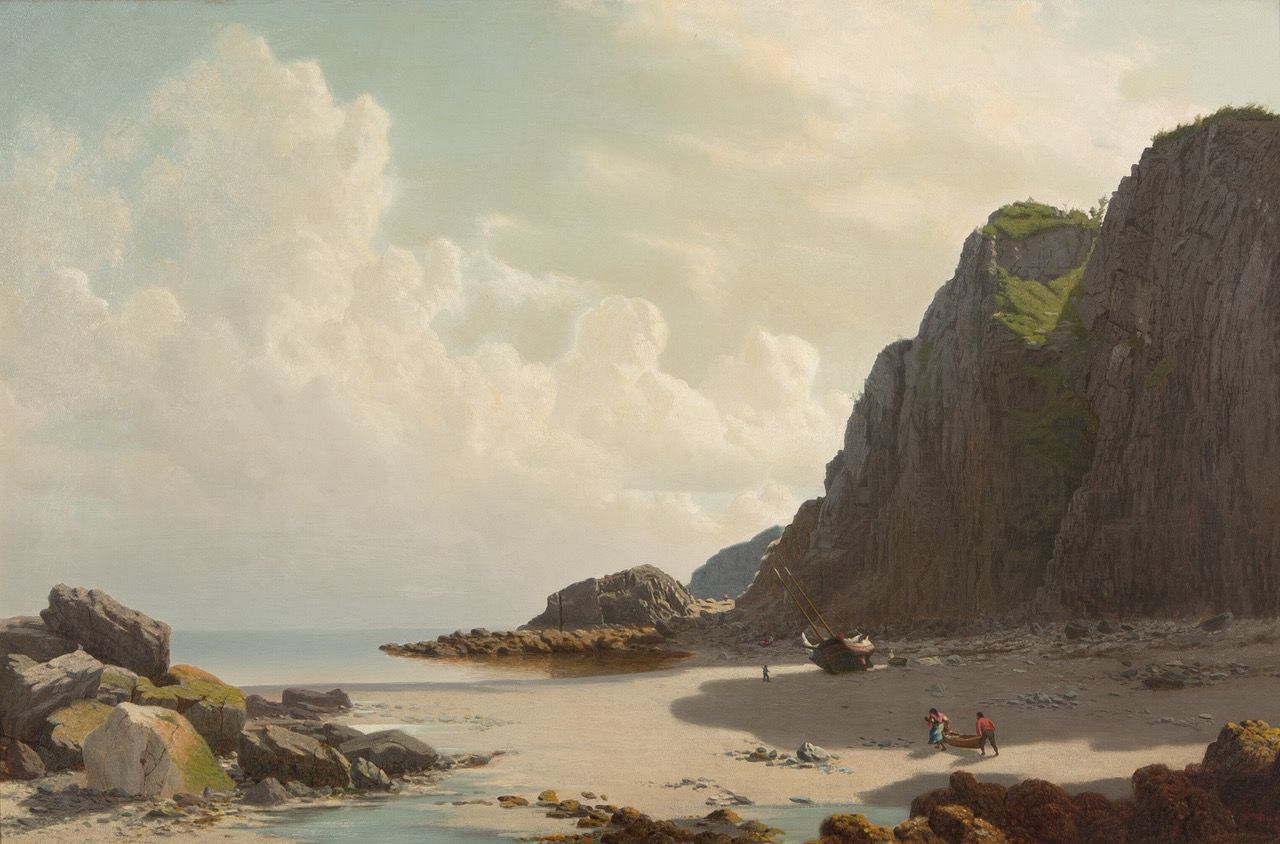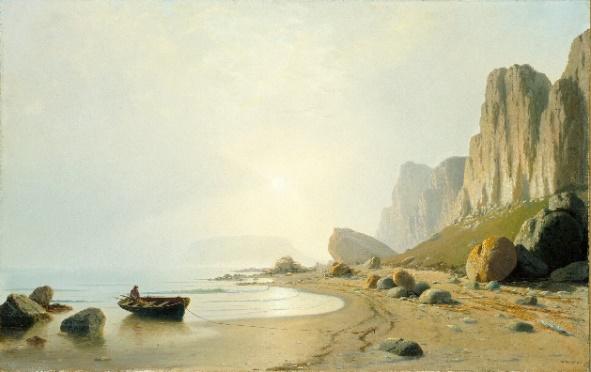
William Bradford (1823-92)
Coastal Scene with Figures (Grand Manan), 1863
Oil on canvas
McMullen Museum of Art, Boston College, Gift of Tania and Thomas M. Evans Jr. in honor of Michael N. Altman P’22, ’24, ’26 for his enduring commitment to the McMullen Museum and the advancement of the study and appreciation of American art, 2019.13

Jeffery Howe
Professor Emeritus, Art History

Grand Manan Island, New Brunswick, is the largest and most remote of the three major islands at the entrance to the Bay of Fundy. The island, which belonged to the United States until traded to the British in 1817, is known for its striking ancient geology. The imposing pyramidal cliffs beside the beach are mirrored in the majestic cloud formations over the sea on the left. A man and woman carry a canoe towards the water, while another figure approaches a boat beached on the sand.
Bradford first traveled to this region between 1854 and 1857, returning often in the 1860s. Bradford Cove, named for the artist, is the only safe anchorage on the west side of the island. Many American artists traveled to remote places to find scenes of unspoiled nature as a refuge from increasing industrialization and the strife of the Civil War. The New England poet John Greenleaf Whittier dedicated a poem to Bradford which makes this explicit with reference to the east winds from Labrador and “The sea-dipped pencil…[which] beguiles my pen away from the sharp strifes and sorrows of today.”1
While other paintings by Bradford are often highly Romantic, this is a work of quiet realism. Partly due to his Quaker background, as well as the influence of photography and Pre-Raphaelitism, Bradford’s style is clear and simple in its realism. In 1867, Henry Tuckerman observed that “Bradford felt that his own success depended on minute accuracy and patient observation of local characteristics.”2 This is echoed in a later painting of a similar scene, Off the Coast of Labrador at the Art Institute of Chicago.
1. The full poem appears in Henry T. Tuckerman, Book of the Artists: American Artist Life, Comprising Biographical and Critical Sketches of American Artists; Preceded by an Historical Account of the Rise and Progress of Art in America (New York: G. P. Putnam & Son, 1867), 556.
2. Tuckerman, 554.

